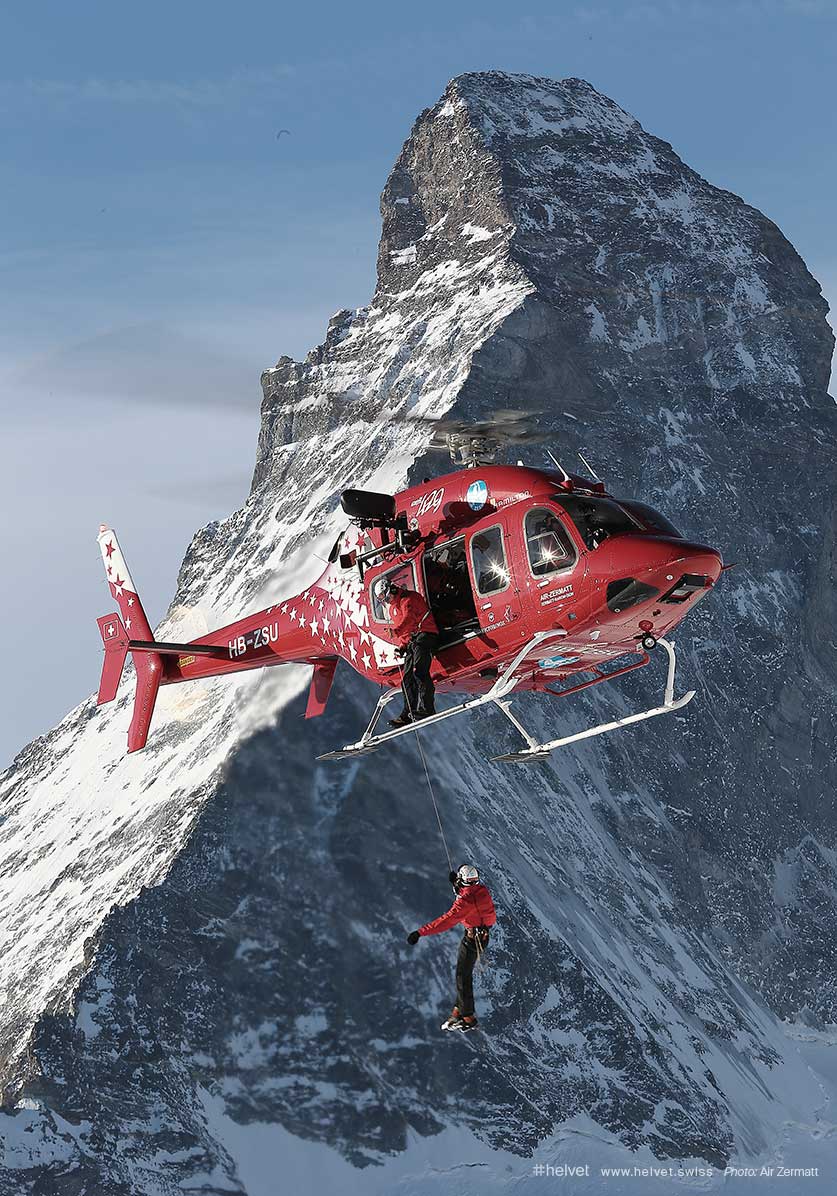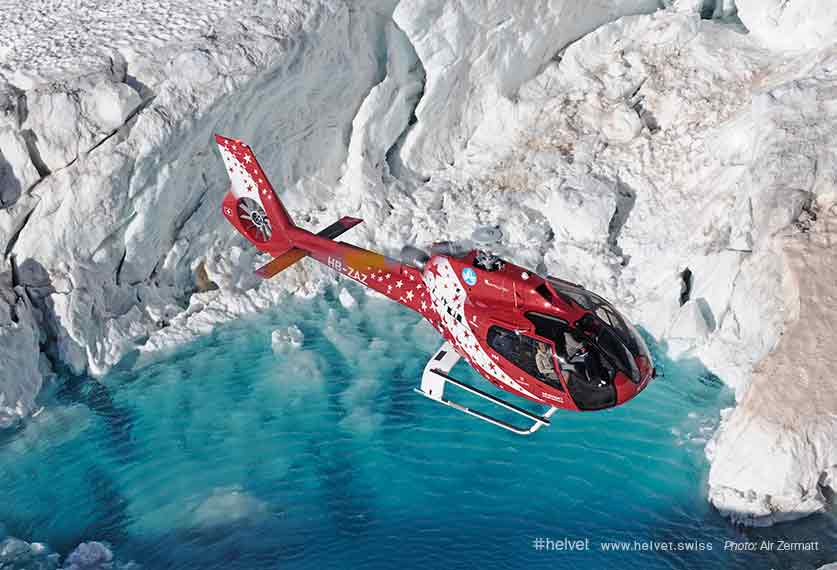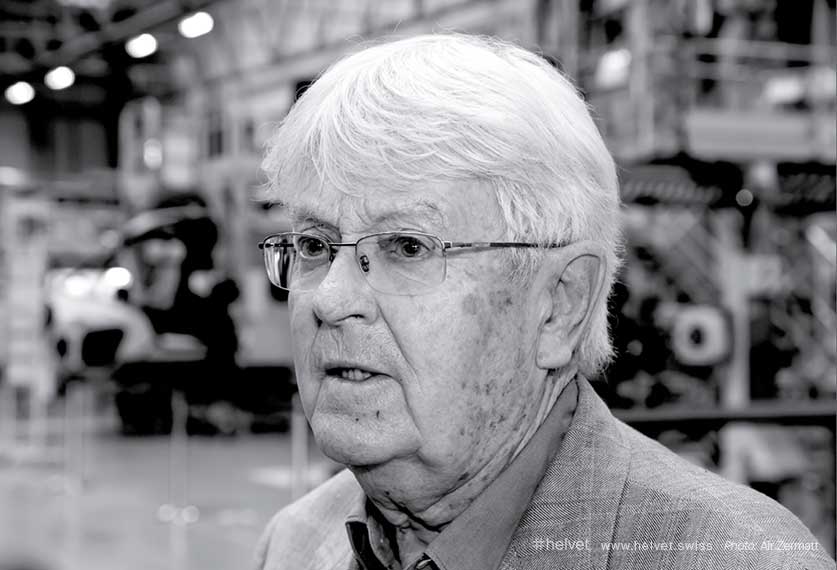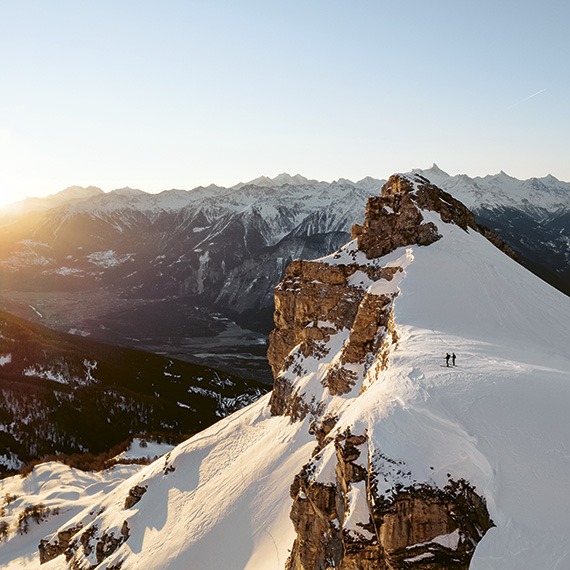
“I’m overjoyed by all the lives that are saved!”
Air Zermatt
Beat H. Perren, CEO and founder of the legendary Zermatt helicopter and rescue company, takes us through a half-century of mountain adventures and lives saved.
Beat H. Perren is known in Zermatt as the white wolf. Not because this pharmacist by trade, who at the ripe age of 88, still sells an incomparable remedy against herpes in his apothecary on the train station square, but because he launched the Air Zermatt helicopter company at a time when losing that bet seemed a foregone conclusion. Flashback.
Could you sum up Air Zermatt in a few figures?
Air Zermatt today has about 50 employees, including a dozen pilots spread between three bases (Rarogne, Gampel and Zermatt), who fly about 5000 or 6000 hours per year on a dozen helicopters. Our total revenue is about 18 million francs, of which 25% comes from search & rescue operations. Over half of our revenue is generated by transport operations (construction, mountain huts, hotels), and the rest from heli-taxi and heli-ski services.
How did the company come about?
In 1968, the only way to get to Zermatt was by train. In the event of an avalanche, the resort could find itself cut off from the rest of the world for up to a week. If a medical emergency evacuation needed to take place at night, someone had to wake up the train conductor to transport the poor soul in the mail car! So Constant Cachin, who was the director of the tourist office, and myself, who was on the town council,
came up with the idea of launching a helicopter company.
What can you tell us about its beginnings?
They were modest indeed! We had a single Augusta-Bell 206A, one pilot, and yours truly who played the jack of all trades (laughs). The first year, we had less than a hundred rescue operations, compared with an average of 1700 a year today! It was no doubt a risky bet, but after the first year we were able to buy an Alouette 3 equipped with a hoist. We were the only company to have one at the time.
Air Zermatt has often been a pioneer. Can you tell us about that?
In 1971, we showed that it was possible to conduct rescue operations on difficult mountain facades, by landing five guides on the north face of the Eiger. This exploit earned us the first of our three “Heroism Awards” (editor: a kind of Oscars of aviation awarded in the United States). The same year we performed the first rescue operation at night. In 1972, we did the first rescue from a cable car, in Schilthorn,
where 72 people were stuck at 240 m above the ground. In 1973, we were the first to have a doctor at our base.
And then, there were the technical advances.
Right. We invented a ski rack that mounts underneath the helicopter, as well as concave doors that provided pilots with greater visibility. We also perfected a tripod system equipped with two hoists that would allow us to retrieve injured persons from the bottom of some deep crevasses.
Tell us about the unique use that Air Zermatt makes of the pneumatic drill.
We found it impossible to retrieve individuals who had fallen into narrow crevasses. Their body heat would cause them to slowly sink deeper into the ice and eventually perish. I remember our attempt – without success – to save a Belgian schoolchild by lowering a guide without shoes, head first, using a hoist. A pneumatic drill allows us to dig a channel parallel to the victim in order to pull him or her out. I remember an Italian fellow who was stuck at a depth of 42 m, who we were able to save in this way. When he arrived at the hospital, his body temperature was only 17.2ºC!
You yourself have worked as a rescue worker, have you not?
For the first 25 years, I was involved in all the rescue operations. I remember one day in 1974 in particular when, unable to find a guide – all were out at a race – I had to take it upon myself to rescue four French climbers who were stuck on the north face of the Matterhorn. I was delighted we were able to save all those lives!
What is it that drives your company?
Striving for excellence, and our family-friendly atmosphere. We all pull together, because we all know that death is only a few steps away. Since 1983, our teams include anesthesiologists trained in rescue operations, with at least ten years of experience as a physician and who also work at hospitals to
keep their skills sharp. And then there are our pilots, who fly 500 to 700 hours a year each, which is far higher than the average. As a result, they’re always at the top of their game!





















